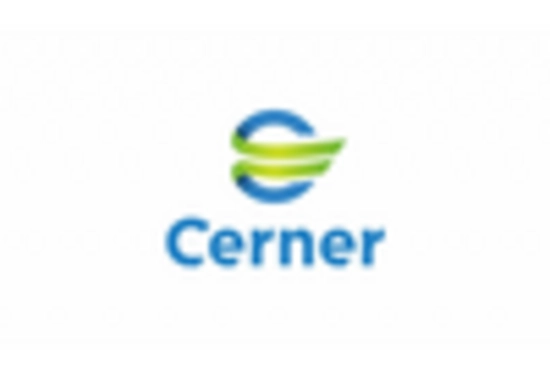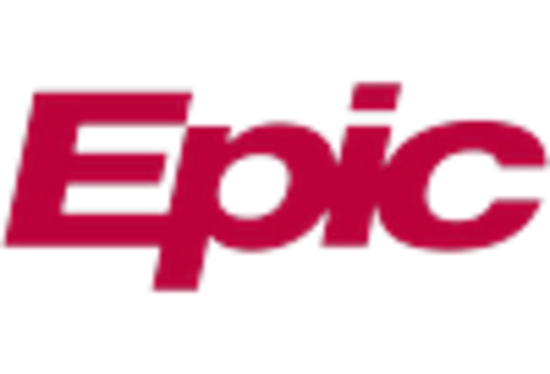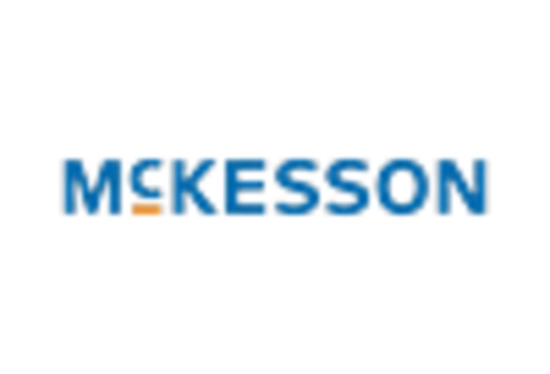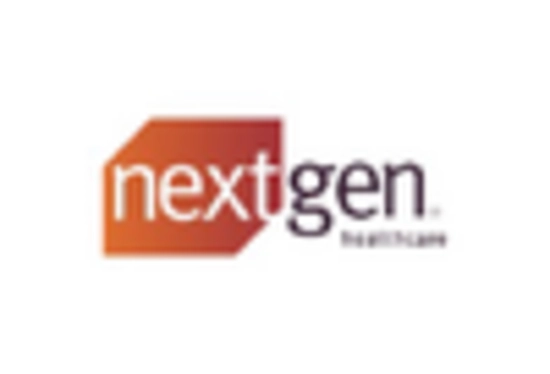Shift Towards Value-Based Care
The transition from fee-for-service to value-based care models is significantly influencing the Integrated Practice Management Software IPM Market. Healthcare providers are increasingly incentivized to deliver high-quality care while managing costs effectively. This shift necessitates the use of advanced practice management solutions that can track patient outcomes and facilitate data-driven decision-making. Approximately 65 percent of healthcare organizations are actively seeking IPM software that supports value-based care initiatives. By leveraging analytics and reporting features, practices can enhance their performance metrics and improve patient satisfaction. Thus, the growing emphasis on value-based care is likely to drive the adoption of Integrated Practice Management Software IPM solutions.
Increased Focus on Telehealth Services
The rise of telehealth services is reshaping the landscape of the Integrated Practice Management Software IPM Market. As healthcare providers expand their service offerings to include virtual consultations, the need for integrated solutions that support telehealth functionalities is becoming paramount. Recent surveys indicate that over 50 percent of practices are investing in IPM software that seamlessly integrates telehealth capabilities. This trend is driven by the demand for accessible healthcare and the convenience of remote patient interactions. Consequently, the integration of telehealth features within IPM solutions is expected to enhance patient engagement and satisfaction, thereby propelling growth in the Integrated Practice Management Software IPM Market.
Regulatory Compliance and Data Security
In the Integrated Practice Management Software IPM Market, the emphasis on regulatory compliance and data security is becoming increasingly critical. Healthcare organizations are mandated to adhere to stringent regulations, such as HIPAA, which necessitate robust data protection measures. The integration of IPM solutions assists practices in maintaining compliance by automating documentation and ensuring secure data handling. Recent statistics indicate that nearly 60 percent of healthcare providers cite compliance as a primary driver for adopting IPM software. As cyber threats continue to evolve, the demand for secure and compliant practice management solutions is expected to rise, thereby fostering growth within the Integrated Practice Management Software IPM Market.
Rising Demand for Operational Efficiency
The Integrated Practice Management Software IPM Market is experiencing a notable surge in demand for operational efficiency among healthcare providers. As practices strive to streamline their workflows, the adoption of IPM solutions has become increasingly prevalent. According to recent data, approximately 70 percent of healthcare organizations are prioritizing the optimization of their operations through technology. This trend is driven by the need to reduce administrative burdens and enhance productivity. By automating scheduling, billing, and patient management, IPM software enables practices to allocate resources more effectively. Consequently, this focus on operational efficiency is likely to propel the growth of the Integrated Practice Management Software IPM Market, as providers seek to improve their overall performance and patient care outcomes.
Growing Emphasis on Patient-Centric Solutions
The Integrated Practice Management Software IPM Market is witnessing a growing emphasis on patient-centric solutions. Healthcare providers are increasingly recognizing the importance of enhancing the patient experience through personalized care and improved communication. Recent data suggests that approximately 75 percent of patients prefer practices that utilize technology to facilitate their healthcare journey. As a result, IPM software that offers features such as patient portals, appointment reminders, and secure messaging is gaining traction. This focus on patient engagement not only fosters loyalty but also improves health outcomes. Therefore, the demand for patient-centric functionalities within Integrated Practice Management Software IPM solutions is likely to drive market growth.

















Leave a Comment